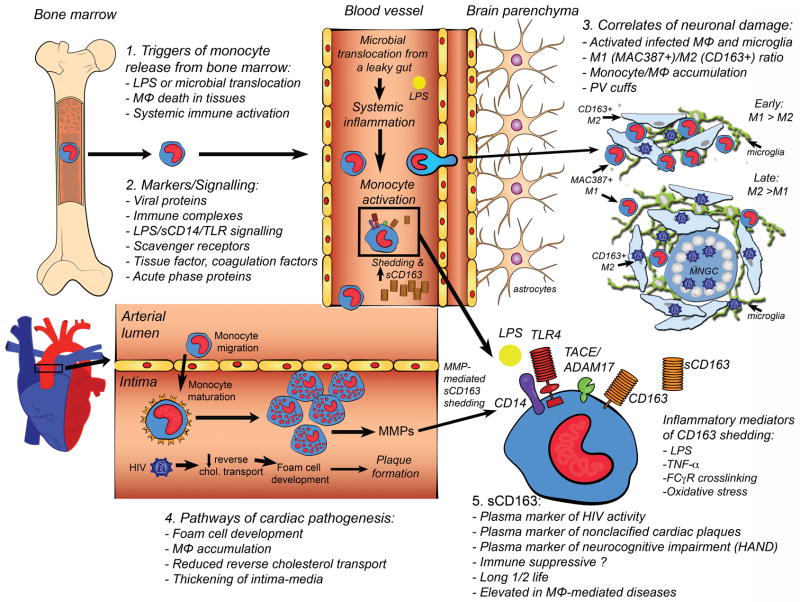Fig. 1. Pathways and mechanisms of expanded monocyte/macrophage activation, turnover and accumulation in parenchymal tissues with HIV infection.
1) Monocyte egress from bone marrow in response to elevated LPS, macrophage death in tissues (lymph node and parenchymal), and systemic immune activation. 2) Markers and signaling molecules involved in augmented monocyte activation and turnover, including viral proteins, acute phase proteins, immune complexes, sCD163 and signaling through LPS/CD14/TLR4 and macrophage scavenger receptor (SR-A), and expression of tissue factor (TF) and CD163. 3) Correlates of neuronal damage in the central nervous system include: activated and infected macrophages and parenchymal microglia, M1 (MAC387)/M2 (CD163) ratio, monocyte/macrophage (MΦ) accumulation, and perivascular (PV) cuffs. MNGC= multi-nucleated giant cell. 4) Pathways of cardiac pathogenesis including development of foam cells, macrophage accumulation in the intima, reduced reversed cholesterol transport, thickening of the intima-media. 5) sCD163 is a marker of HIV activity, plasma marker of non-calcified (vulnerable) cardiac plaques, and neurocognitive impairment. sCD163 has immune-suppressive functions in vitro, is elevated in macrophage mediated diseases, has a long half-life, and is therefore a stable biomarker.

